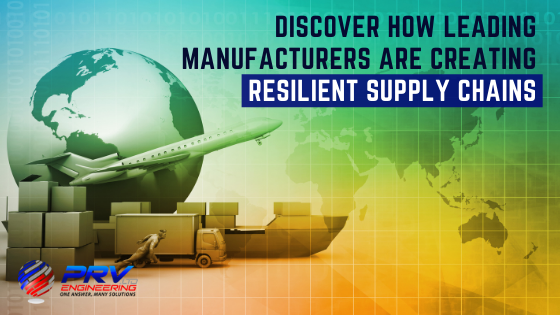
What Is Supply Chain Resilience?
The concept “resilience” dates back to the work of C.S. Holling, an ecologist who first noted the characteristics of a resilient ecological system in 1973. Today, resilience has been applied to various fields of practice including psychology, disaster management, systems thinking and supply chain management.
Resilience means different things to different people as some see it as a reactive capability from disruption or shock. However, others see it as a more proactive approach toward helping a company prepare for disruption. Considering the differing opinions, it’s evident that there is clear confusion surrounding this key concept.
Put simply, supply chain resilience should be both – an ability to resist disruptions and recover operational capability after the fact. From this perspective, there are essentially two critical components: the capacity for resistance and the capacity for recovery.
Resistance Capacity For Successful Supply Chain Management
Resistance capacity refers to the ability of a specific system to minimize the impact of disruption by evading altogether which termed ‘avoidance’. It can also focus on minimising the time between the onset of the disruption and the start of recovery. This is known as ‘containment’.
Recover Capacity For A More Resilient Supply Chain
Recover Capacity refers to how a system can return to operational status once a disruption has taken place. The system recovery process is characterised by a ‘stabilisation phase’ followed by a ‘return to a steady-state of performance’.
The final operation ‘steady-state’ may involve the company having to return to the original performance levels or a version thereof. This decision is not standard and can depend on many disruption and competitor factors.
Disruptions In Supply Chain Management
Several potential disruptions can impact the supply chains, from changing customer demands to issues with regulations and compliance as well as global competition. Manufacturers are constantly pressured to cut costs and increase profits despite various types of crises. This, in itself, can be a dangerous situation unless you cut costs effectively.
Manufacturers are expected to produce profitable products while promoting innovation and value. The problem is, many companies don’t know that procurement and supply chain belong in the same sentence. This is due to many following a ‘silo system’ which refers to a business process where divisions work independently and avoid sharing information.
As a result, many lack collaboration and visibility with dated technology solutions that have failed to unite company stakeholders while combining data and strategy to create a robust supply chain.
Tips For Creating A More Resilient Supply Chain
The coronavirus has certainly highlighted flaws in supply chain management across the globe with only a few managing to get a grip on things early on. Considering the new normal is to expect the unexpected, the rigidity of today’s supply chains put them at even greater risk.
Today, leading manufacturers are looking at these vulnerabilities and turning them into opportunities by utilising digital solutions. These systems can help build resilience throughout the entire process with deeper and broader visibility.
Manufacturers who embrace automation and digitisation encourage real-time collaboration and automated spend management. They are better at anticipating risk, making informed decisions and pivot when needed in response to potential changes, challenges or issues.
These companies are not just surviving but thriving in a challenging environment whilst adding innovation and value to their supply chain and business as a whole.
Using Industry Insights
Indeed, the least examined areas of a business are often where the most resilient and successful companies find their edge. Information like this is worth its weight in gold and manufacturers must keep their fingers on the pulse. A new study from IndustryWeek and Ivalua features insights from hundreds of global manufacturers of all sizes. It reveals vital information on the following:
- how companies are handling procurement and supply chain collaboration
- where they are seeing challenges and opportunities
- how they are investing in technology
- what developments are on the horizon for the future of the industry
Manufacturers can use these insights to help implement a strategy to improve performance and increase resilience within the supply chain. Investing in advanced digital solutions will increase visibility and collaboration between procurement and supply chain teams. It will also improve product launch efficiencies and the management of all spend and suppliers.
Conclusion
We are facing increasingly dynamic and turbulent times where the supply chain plays an even more important role. Numerous events take place every day that could threaten to disrupt operations, including natural and man-made disasters, equipment failures, fire, labour disputes, supplier defaults, political instability and even terrorist attacks.
These disruptions can be devastating and reinforce the fact that not only can supply chain disruptions affect business operations but they often result in huge financial damage beyond the immediate operational impacts. By following these simple guidelines, manufacturers of all sizes can reduce and mitigate many supply chain risks in a complex market environment.
For more articles on the latest developments in engineering, manufacturing and technology, follow our blog. You can also join the conversation on social media using the hashtag #PRVtech as we share interesting insights, tips and more.
This site uses Akismet to reduce spam. Learn how your comment data is processed.


 Mail:
Mail: 




Leave a Comments